Museums offer time-traveling tour of Shanxi's rich culture
North China's Shanxi province, regarded as one of the birthplaces of Chinese civilization, boasts a rich historical and cultural heritage. As such, museums have become important historical and cultural windows of the province and how it has developed.
From 2012 to the end of 2022, the number of museums in the province grew from 63 to 192. Among them, six are national first-grade museums, 17 are second-grade museums, and another 17 are third-grade.
On this International Museum Day, let's take a look at several museums in the province to learn more about the 5,000-year history of Chinese civilization.
Shanxi Museum
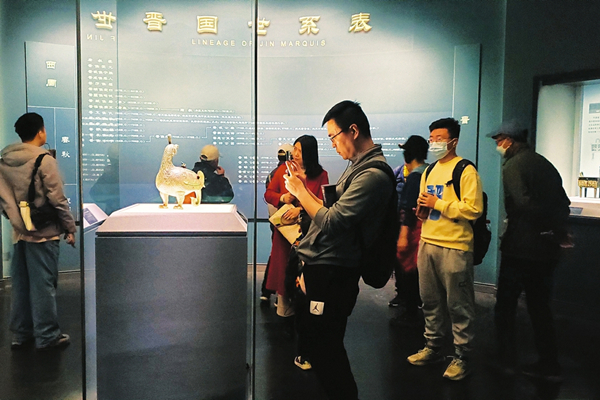
Visitors peruse the bounty of treasures at Shanxi Museum. [Photo/Shanxi Daily]
Established in 2004, Shanxi Museum at the west bank of Fenhe River in Taiyuan covers an area of 112,000 square meters and is the largest collection, protection, research and exhibition center of historical relics in Shanxi province.
The Shanxi Museum complex consists of a main building and four auxiliary buildings at four corners. The shape of the main building resembles an ancient Chinese cauldron named Ding with four different wings – symbolizing richness and stability. The four auxiliary buildings are the office building, the conference center, the convention center and the art center. The entire complex has become a cultural landmark in the city.
The museum houses 400,000 works of art and artifacts that embody Chinese traditional culture. Among them, cultural relics from the Neolithic Age at the Taosi site, cultural relics from the Shang (c.16th century-11th century BC), Zhou (c.11th century-256 BC) and Northern (386-581) dynasties, stone carvings, local Shanxi ceramics, cultural relics related to operas from the Jin (1115-1234) and Yuan (1271-1368) dynasties, and cultural relics related to Shanxi merchants from the Ming (1368-1644) and Qing (1644-1911) dynasties showcase the essence of Shanxi culture.
The relics displayed at the museum consist of seven historical and cultural subjects, including the local area as a cradle of civilization, an ethnic melting pot and opera hometown. They also include five art genres, such as porcelain and traditional Chinese painting.
In addition, the library in the museum covering more than 1,000 square meters holds more than 270,000 books, including over 110,000 ancient books. It is recognized as a "National Key Protection Unit for Ancient Books" by the Ministry of Culture.
Address: No 13, Northern Section of Binhe West Road, Taiyuan, Shanxi province
Opening hours: 9:00 - 17:00 (entry until 16:00)
Closed days: closed on Mondays (except those that fall on national holidays), Spring Festival eve and Spring Festival
Tel: 0351-8789188 (reception); 0351-8789555 (appointments)
Taiyuan Museum
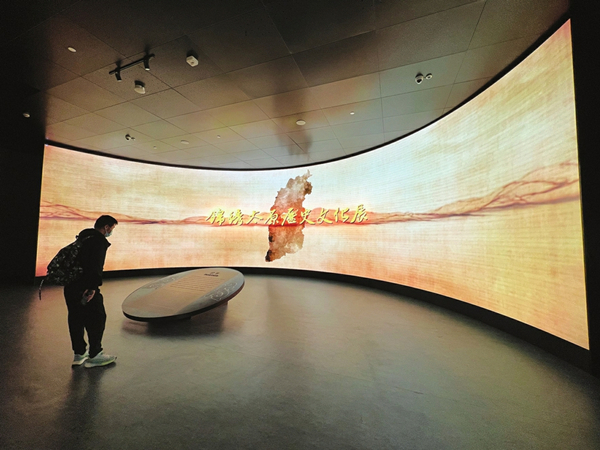
Digital technology is applied to enhance an exhibition at Taiyuan Museum. [Photo/Shanxi Daily]
As one of the landmark buildings in Taiyuan, Taiyuan Museum occupies an area of 64,400 sq m, including more than 14,900 sq m of exhibition area. Boasting 200,000 pieces of cultural relics covering pottery, bronzeware, porcelain and calligraphy paintings, the zone is expected to be a comprehensive and exquisite palace of art and culture, providing visitors with various knowledge of history, art and culture.
Opening hours: 9:00-17:00 (No admission after 16:00)
Closed days: Mondays, Chinese New Year's Eve and New Year's Day (except national holidays).
Admission fee: 6,000 limited free tickets per day for adults with a valid certificate (3,000 tickets in the morning and the same in the afternoon), and each adult can shepherd no more than five children.
Group ticket: Tourist groups must make an appointment two workdays in advance and get the tickets at the booking office.
Booking telephone number: 0351-5679056
Datong Museum
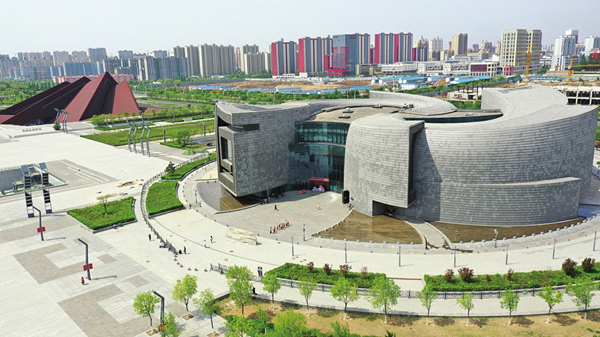
Datong Museum [Photo/Shanxi Daily]
A landmark of Datong city of Shanxi province, Datong Museum is the second largest historical museum in the province.
The museum, established in 1958, was formerly called the Datong City Cultural Relics Exhibition Hall. It was officially renamed the Datong Museum in 1963.
The theme of the museum is "Minhe Datong", which reflects the development process of ethnic integration, as well as political, economic, military, and cultural prosperity and promotion of harmonious coexistence of all ethnic groups.
The museum covers an area of 51,556 square meters, with a building area of 32,821 square meters. It currently holds over 70,000 items.
The relic collections are famous for highlighting the characteristics of northern minority culture and the military and religious culture of the border towns. In particular, the delicate cultural relics of the Northern Wei, Liao, and Jin dynasties enjoy a high reputation among tourists.
The collections from the Northern Wei Dynasty (386-534) are the most famous and attractive. They show just how gorgeous Datong was as the capital during the Northern Wei Dynasty.
The collections include screen paintings of ceremonial troops, five wooden lacquer prints unearthed from the Sima Jinlong Tomb, the headstones of Song Shaozu's ancestors, Persian silver coins, Xianbei objects and accessories, and ceramic ware from the Northern Wei Dynasty. Of these items, the stone carvings unearthed from the Northern Wei architectural ruins are particularly rare among historical stone carvings.
Address: Taihe Road, Yudong New District, Datong city, Shanxi province
Opening hours: 9:00-17:00 (Last entry at 16:00); closed Mondays
General admission: Free
Tel: 0352-2303518
Yangquan Museum
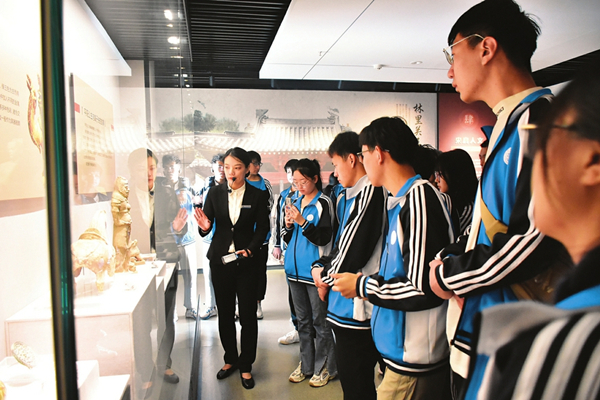
Students visit Yangquan Museum. [Photo/Shanxi Daily]
Yangquan Museum was officially opened in February 2019 in Yangquan city.
It's now home to 1,475 pieces and sets of cultural relics, including 388 pieces of porcelain, 236 pieces of pottery, 100 paintings and works of calligraphy, and 53 statues.
As a local comprehensive museum, it shows the achievements made over the years as well as Yangquan Buddhist statues, porcelain art, Pingding pottery, and coal culture to visitors through various displays of cultural relics, as well as the adoption of multimedia technologies.
Address: No 1 Taobei Middle Street, Chengqu district, Yangquan city, Shanxi
Opening hours: 8:30-11:30; 14:00-18:00 (winter) 8:30-11:30; 14:30-18:30 (summer)
Closed days: closed on Mondays, Spring Festival eve and Spring Festival
Tel: 0353-2565339 (appointments)
Jincheng Museum
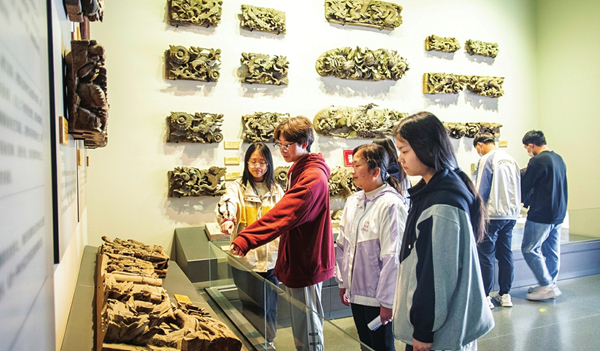
Visitors browse cultural relics at Jincheng Museum. [Photo/Shanxi Daily]
Jincheng Museum is a comprehensive museum that integrates scientific research, collections and exhibitions of cultural relics, social education and cultural exchanges in Jincheng city.
The museum's exterior incorporates traditional Chinese architecture. Inside, it has four exhibition floors, storage and equipment areas, and 10 exhibition halls spanning a total of 3,000 square meters.
There are more than 20,000 cultural relics in Jincheng Museum, which can be broken down into 19 categories such as pottery, bronze, jade, and porcelain. There are 740 precious cultural relics, among which the most distinguished in terms of their local features are the pottery figurines, as well as the burial objects and glazed figurines from the Ming (1368-1644) and Qing (1644-1911) dynasties.
Address: northwestern corner at the intersection of Fengtai East Street and Wenbo Road, Jincheng city, Shanxi
Opening hours: 9:00-12:00; 15:00-18:30 (summer) 9:00-12:00; 14:30-18:00 (winter)
Closed days: closed on Mondays, Tuesdays



